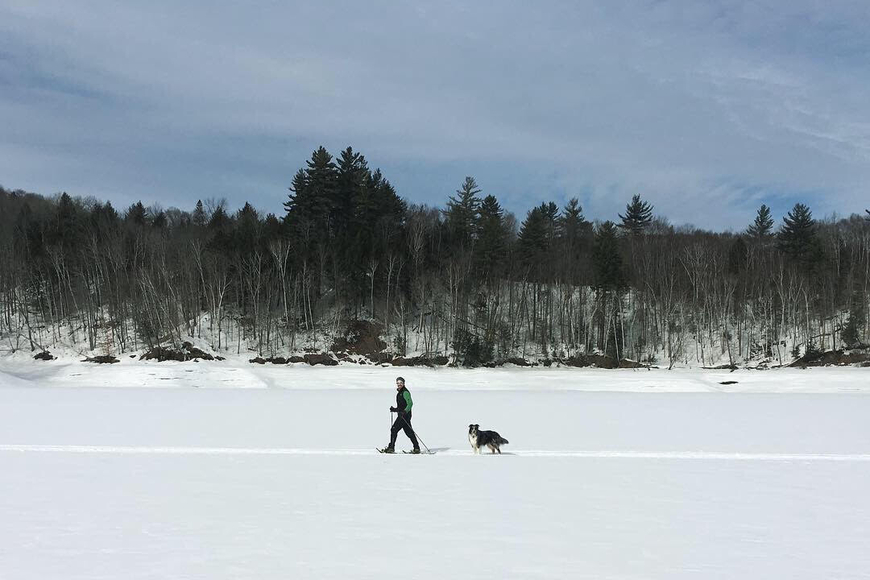Getting Out And Staying Safe This Winter

There’s no doubt in my mind that most Vermonters will find themselves outside a lot this winter. Vermonters usually make the most of the four to five to almost six months of cold, snowy weather, but with the required social distancing this year, it’s very likely that many more of us will spend time outside to escape the monotony of being home with the same pod day in and day out. Getting outside to be active is not only good for your physical health by challenging your endurance, strength, and balance, but also for your mental health by keeping your brain engaged and alert. Whether you head out for a long walk or snowshoe, or a more cardio intensive cross-country ski or pond skate, or even head to the slopes to ski or snowboard, there’s one thing that is important to remember above all else – proper preparation is key!
As with any outdoor activity, being prepared and ready pays off, but more so in the wintertime because the cold can be dangerous. Hypothermia is a serious concern in the wintertime because the decrease in body temperature impairs the ability of your nervous system, heart, and other organs to function normally. This eventually leads to confusion, poor decision making, shallow breathing, slow pulse, and eventually a loss of consciousness. Frostbite is another concern as exposure to the cold will cause the skin and underlying tissues to freeze and eventually die, potentially leading to limb loss if it gets severe enough. Proper preparation before you venture outdoors will help keep you warm, safe, and healthy!
- Inspect your gear before you use it – whether it’s a pair of snowshoes, skis, or even a snowmobile, do a quick inspection of your gear to make sure that it is all in working order before you head out into the cold. Broken equipment can lead to unsafe situations, either by leaving you stranded outside or even causing injury. Both will leave you exposed to the cold for longer than you may have prepared for and increases your risk of hypothermia and frostbite.
- Dress warmly & appropriately – even if the weather looks to be light, you should put on enough warm layers to protect your body from harsher weather, especially if you are planning to be out for a while. That includes:
- Waterproof & windproof outer layers (coats, snowpants, boots, gloves/mittens, etc.) to protect your body from the wind and from potentially getting wet. Both will cause your body to lose heat more rapidly and can lower your body temperature enough to cause hypothermia.
- Insulating middle layers (shirts, pants/leggings, vests, socks, hats, etc.) to maintain adequate body temperature in your core and extremities. Merino wool and goose down are some of the best natural insulators, while microfleece is a great synthetic insulator.
- Moisture-wicking base layers (shirts, leggings) are important if you plan to be active enough to sweat a lot while outside. These layers will pull moisture away from the body and help you maintain body temperature, as sweat on the skin acts to lower your temperature – great for the summer, but not as much for the winter! Polypropylene & wool are good wicking materials. Cotton is a no-go since it absorbs water and holds it on the skin.
- Pack supplies & extra layers – especially if you plan to be outside for a while or venture further away from your home. Grab a backpack so that you can carry snacks to maintain your blood sugar and energy, as well as water or other fluids for proper hydration so that your body can function at its best. If you think you might sweat a lot, pack extra base layers so that you can swap out wet layers for dry ones. While the quick exposure to the cold to change might be unpleasant, your body will thank you for helping it stay warm in the long run. Lastly, pack up a headlamp or flashlight in case you find yourself in the dark. A first aid kit is never a bad idea either, especially if you’re going further off the grid!
- Make a plan for safety – this may be as simple as planning when you’re going to be outside. Based on the weather, temperature, and remaining daylight hours, you may decide to be outside for longer or shorter duration. If you plan to venture further away from home or even off the grid, it is a good idea to take a map and make sure that someone knows where you plan to be. There are apps that will track your location via your phone or watch GPS and notify someone if you're stationary for 5 minutes – my boyfriend uses this when running or backcountry skiing so that I can check in if something goes wrong (knock on wood)
- Invite a (socially distant) friend – having a second or third person to join you is a great idea not only for the social(ly distant) aspect but also for safety when being active outdoors, as they can provide help or get help if something goes wrong.
However you decide to stay active and entertained this winter, make sure to do it safely!


